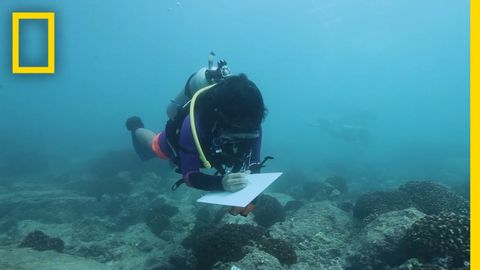拯救海洋生物多樣性。珊瑚的恢復|實地探索者 (Saving Ocean Biodiversity: Coral Restoration | Explorers in the Field)
 沒有此條件下的單字
沒有此條件下的單字US /ɪnˈtɛns/
・
UK /ɪn'tens/
US /ɪˈvɛntʃuəli/
・
UK /ɪˈventʃuəli/
US /ˌɑpɚˈtunɪti, -ˈtju-/
・
UK /ˌɒpə'tju:nətɪ/
- n. (c./u.)機會;時機;良機;工作機會;商機
US /tɛkˈnik/
・
UK /tekˈni:k/
- n. (c./u.)技術;工藝;技能;(藝術)技巧
